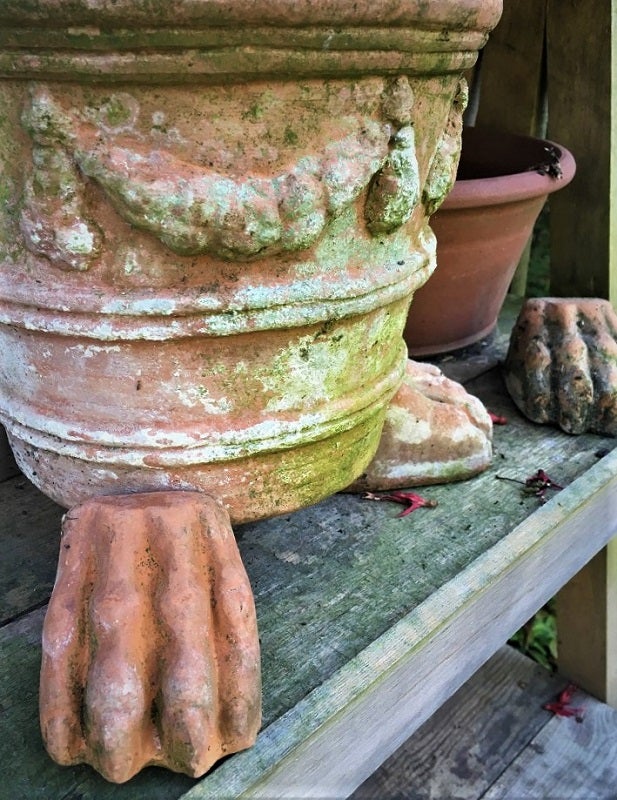Plants that have the WOW factor
Published 8:00 am Sunday, April 28, 2019

- Image by AliceKeyStudio from Pixabay
By Sheri Bethard
Orange County Master Gardeners
You go to your local garden center and find the plant that has the buy me now “WOW” factor you have been looking for all summer and purchase it. After a couple of weeks, they start looking droopy, the blooms are fading and you are wondering what did you do wrong. You watered it when it needed it. So you are trying to figure out how to get that just bought look again or at least close to it.
Well, here are a few tips that I hope will bring those plants back to life again. First, is the plant in the right place according to the plant tag? As I explained in my article several weeks ago “Selecting the right plant” it is important to place your plant in the correct location. If it requires full sun, don’t put it in the shade. Follow the information on the plant tag.
Second, have you checked to see if the plant is root-bound? If so, it needs to be up-potted into a pot about one-inch larger round. When repotting, be sure to loosen the roots so they will easily grow into the new soil.
Third, have you fed your plant? Plants, just like people need food too. Fertilizers also know as plant food provide essential nutrients the plant will need to grow healthy and to stay green and bloom (if a blooming plant) all season.
Most water-soluble fertilizer is grouped according to their effect or for a specific plant type.
Typically, the all-purpose fertilizer, 20-20-20 can be used in many environments, from your potted plants to your bedding plants. The numbers represent a balanced ratio between Nitrogen (N), Phosphorus (P), and Potassium (K), which combined together, will promote green leaf growth, a strong root system and continual blooming throughout the growing season.
All the numbers on fertilizers are considered percents. The first number above is Nitrogen is 20-percent and is comprised of 20-percent total nitrogen. It shows 20-percent Phosphorus and 20-percent Potassium but they are not true percentages of those elements.
The amount of phosphorous pentoxide (P2O5) used is actually 44-percent phosphorous and the potassium actually used is potassium oxide (K2O), which is only 83-percent potassium. So the label really means 20-percent nitrogen, 8.8-percent phosphorous and 16.6-percent potassium.
Besides these three nutrients, there are three3 additional Macronutrients – magnesium, calcium and sulfur plants need that should be included in the list of nutrients.
Micronutrients are also needed to help keep the plant healthy. Actually, all plants need micronutrients. They include iron, manganese, zinc, copper, boron, molybdenum, nickel and chloride. They are used in relatively small amounts.
Since there are so many choices on the market, when shopping for a water-soluble fertilizer, check the label to see what nutrients it contains.
It should contain most, if not all of the ones I have listed in order for you to get a good all-around fertilizer for your plants. There are many different formulas such as bloom boosting, azalea, palm, cactus, tomatoes, orchids, and many others.
Now to watering and fertilizing.
Watering should be done as your plants require it, some will need it more often than others. Sometimes you can tell they need water by their look as they are not as glossy as they normally are, or their leaves are droopy. If unsure, dig down about an inch into the soil in the pot and if it is dry, they it is time to water.
Fertilizing is a different story. I fertilize about every two weeks and I do it weakly. Instead of following the directions and using full strength, I use half the amount. For example: if the regular dosage calls for two tablespoons to a gallon of water, then I use one tablespoon to the gallon of water. Then once every two – three months, I leach my pots to rid any build up of salt deposits that might have appeared from any fertilizer I might have used with salt in them. I try to not use any fertilizers with a salt base for this reason. Salt can harm your plants roots.
I hope you have learned how to keep the WOW in your plants once they leave the garden center.
Happy Gardening.
Sheri Bethard, Orange County Master Gardeners





